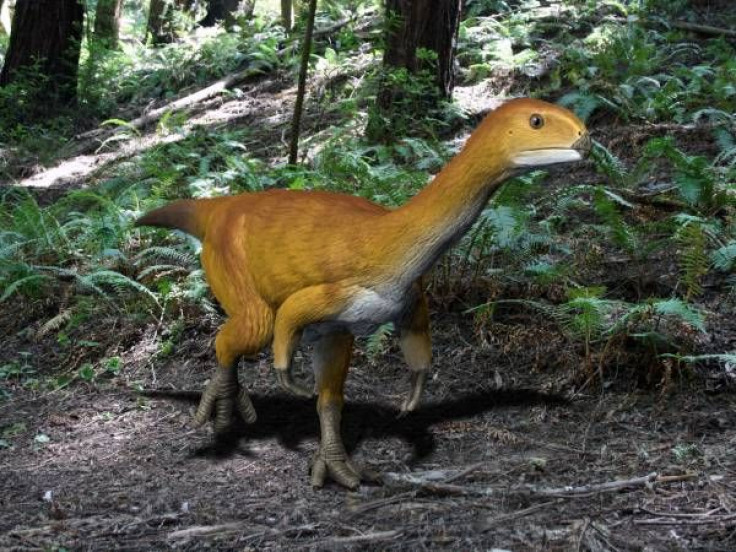Scientists Explore Steps Of Dinosaur Evolution Thanks To Strange Fossil

Scientists have figured out where a weird-looking dinosaur fits in its family tree, solving not just the mystery of this one species but also the question of how dinosaurs evolved to become so diverse.
The Chilesaurus diegosuarezi lived 150 million years ago and had a sort of hodgepodge of features that gave it a look both of a carnivore like a raptor and of a herbivore, which made it a confusing fossil for paleontologists. But according to a study in the journal Biology Letters, researchers analyzed the anatomical features of early dinosaurs to come to the conclusion that the Chilesaurus was a transitional dinosaur in the Late Jurassic period that was “bridging the morphological gap” between the group of carnivores that stood up on two legs, called theropods, and the ornithischians that were mostly herbivores.
One of the most famous theropods was the Tyrannosaurus rex. For ornithischians, famous members included the Stegosaurus and Triceratops.
Although the Chilesaurus was originally classified as a type of theropod, the scientists are now saying that it is “the earliest diverging member of Ornithischia” and in that position, in the other major group of dinosaurs, it might help the experts understand how its kind evolved.
The new placement on the dinosaur family tree would make it part of a previously unknown “extensive ghost lineage” that existed between ornithischians and theropods.
“Chilesaurus almost looks like it was stitched together from different animals, which is why it baffled everybody,” researcher Matthew Baron said in a statement from the University of Cambridge.
It had what appeared to be a carnivore’s head and had a similar look to a raptor, which was a theropod, but its flat teeth, which would have been used to pulverize plants, suggested it was actually a herbivore.
Its new classification brings some sense to the situation.
“Establishing the relationships of this taxon is critical for fully understanding the evolution of many major anatomical features, including those associated with herbivory, pelvic structure and locomotion,” the study says. In this case Chilesaurus is leading to “the recovery of Theropoda and Ornithischia as sister taxa that are united by many shared features.”
There may be others in that ghost lineage from the Triassic and Jurassic periods that have yet to be discovered.
“Before this, there were no transitional specimens — we didn’t know what order these characteristics evolved in,” Baron said. “This shows that in [ornithischians], the gut evolved first, and the jaws evolved later — it fills the gap quite nicely.”
The split in the dinosaur family tree may have happened, he said, because it became more advantageous for carnivorous dinosaurs to eat vegetation instead of meat.
“Chilesaurus is one of the most puzzling and intriguing dinosaurs ever discovered,” study co-author Paul Barrett said in the statement. “Its weird mix of features places it in a key position in dinosaur evolution and helps to show how some of the really big splits between the major groups might have come about.”
© Copyright IBTimes 2024. All rights reserved.











